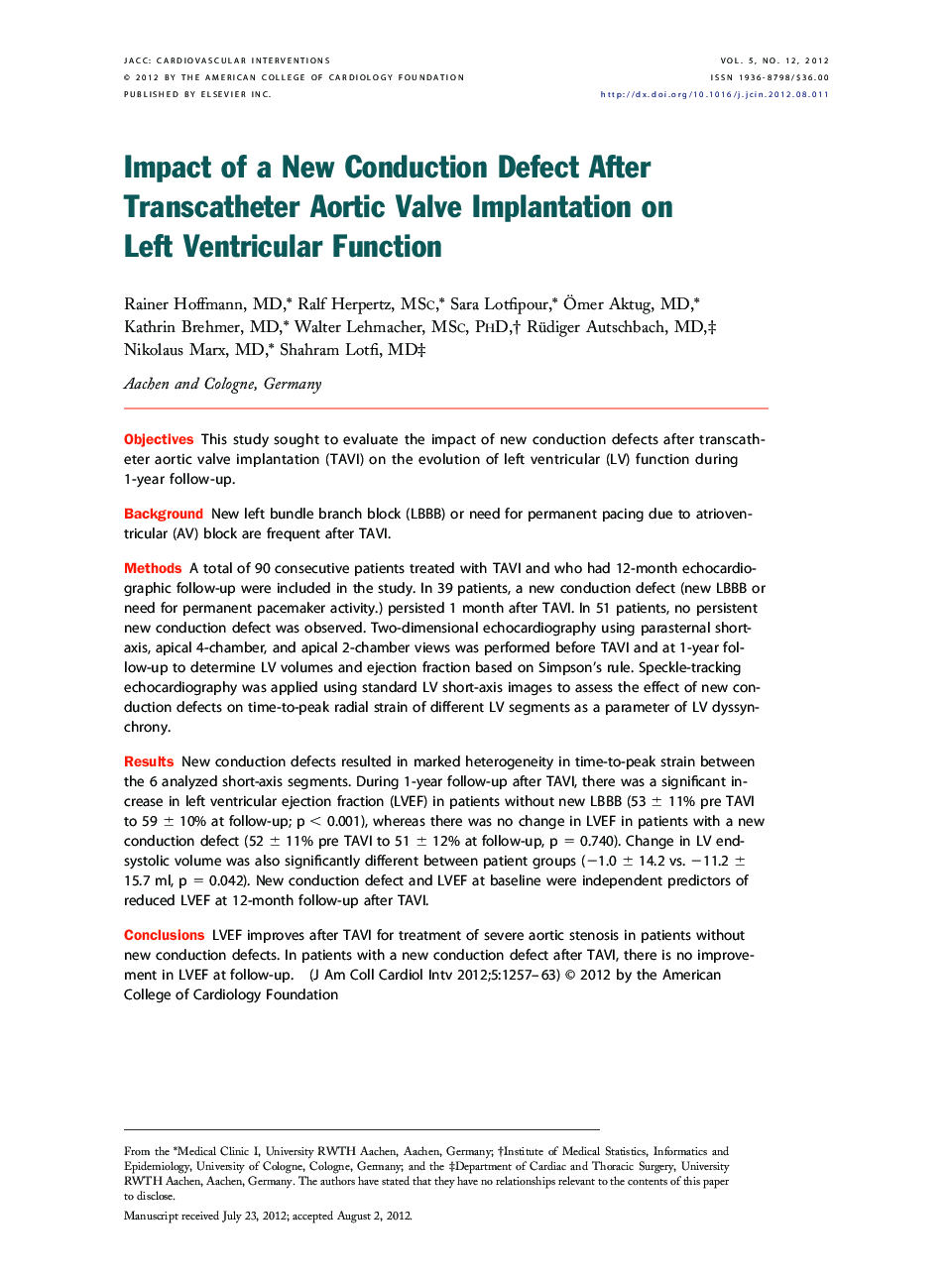| کد مقاله | کد نشریه | سال انتشار | مقاله انگلیسی | نسخه تمام متن |
|---|---|---|---|---|
| 2940772 | 1177042 | 2012 | 7 صفحه PDF | دانلود رایگان |

ObjectivesThis study sought to evaluate the impact of new conduction defects after transcatheter aortic valve implantation (TAVI) on the evolution of left ventricular (LV) function during 1-year follow-up.BackgroundNew left bundle branch block (LBBB) or need for permanent pacing due to atrioventricular (AV) block are frequent after TAVI.MethodsA total of 90 consecutive patients treated with TAVI and who had 12-month echocardiographic follow-up were included in the study. In 39 patients, a new conduction defect (new LBBB or need for permanent pacemaker activity.) persisted 1 month after TAVI. In 51 patients, no persistent new conduction defect was observed. Two-dimensional echocardiography using parasternal short-axis, apical 4-chamber, and apical 2-chamber views was performed before TAVI and at 1-year follow-up to determine LV volumes and ejection fraction based on Simpson's rule. Speckle-tracking echocardiography was applied using standard LV short-axis images to assess the effect of new conduction defects on time-to-peak radial strain of different LV segments as a parameter of LV dyssynchrony.ResultsNew conduction defects resulted in marked heterogeneity in time-to-peak strain between the 6 analyzed short-axis segments. During 1-year follow-up after TAVI, there was a significant increase in left ventricular ejection fraction (LVEF) in patients without new LBBB (53 ± 11% pre TAVI to 59 ± 10% at follow-up; p < 0.001), whereas there was no change in LVEF in patients with a new conduction defect (52 ± 11% pre TAVI to 51 ± 12% at follow-up, p = 0.740). Change in LV end-systolic volume was also significantly different between patient groups (−1.0 ± 14.2 vs. −11.2 ± 15.7 ml, p = 0.042). New conduction defect and LVEF at baseline were independent predictors of reduced LVEF at 12-month follow-up after TAVI.ConclusionsLVEF improves after TAVI for treatment of severe aortic stenosis in patients without new conduction defects. In patients with a new conduction defect after TAVI, there is no improvement in LVEF at follow-up.
Journal: JACC: Cardiovascular Interventions - Volume 5, Issue 12, December 2012, Pages 1257–1263